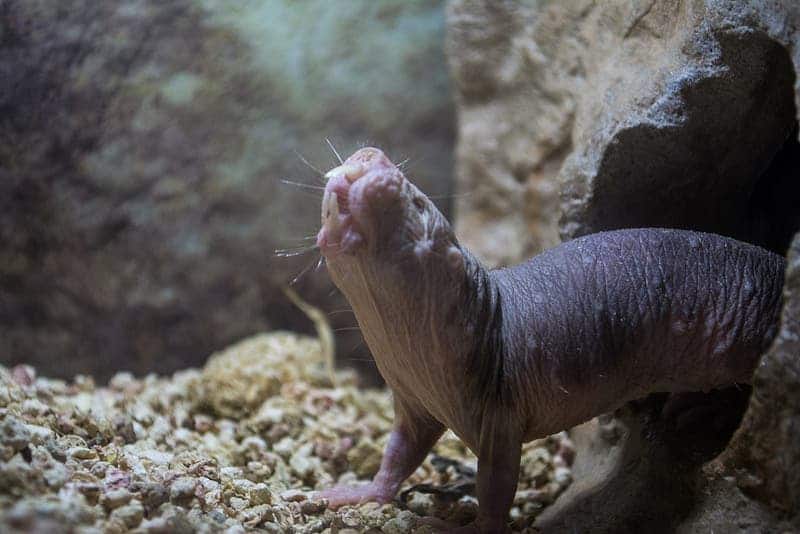Biology’s ‘ugly duckling’ cannot cease to amaze us. Researchers have analyzed a large trove of data on historical naked mole-rat lifespan and discovered something truly amazing. Not only do the naked mole-rats live 5 times longer than a similar-sized mammal, but they also do not show any signs of aging whatsoever.

Naked mole-rats’ superpowers
Mole-rats are astonishing creatures. What they lack in aesthetics they make up in superpowers: they’re immune to cancer, don’t feel pain, can switch from being cold-blooded to warm-blooded, can run backward as fast as forward, and can live in extremely low oxygen conditions, their brains being capable of surviving without oxygen for up to five hours. Also, their front teeth grow out in front of their mouths.
Their behavior is even weirder. The African mole-rat, scientifically known as Heterocephalus galber, exhibits eusociality. This means that mole-rats social life is more like an ant’s than that of a typical mammal. Only the queen and one to three chosen males are fertile and are in charge of reproduction. The other members of the colony (usually consisting of almost 300 mole-rats) are in charge of food gathering, burrow security, digging tunnels, tunnel maintenance, some of them even being nannies.
If the queen dies, any other unfertile female can be crowned. The regular working mole-rat is unfertile but can turn on the reproduction function if needed. Some biologists suggest that this could be one of the reasons mole-rats live such long lives, they believe that the tiny creatures are just waiting patiently to have offsprings.
Forever young
Lead researcher Rochelle Buffenstein has studied naked mole-rats for over 30 years and has collected a huge amount data on them, including lifespan. The comparative biologist, who works for Google’s anti-aging company Calico, was completely amazed by the results. She gathered data from over 3,000 specimens from her lab and discovered that the Gompertz-Makeham law, a mathematical equation that relates aging to mortality, doesn’t apply to mole-rats.
Basically, the law says that the risk of dying rises exponentially with age; in humans, for example, it doubles roughly every 8 years after the age of 30. This theory successfully applies to most animals, especially to mammals, but apparently not to our rodent super-heroes. A naked mole-rat’s daily risk of dying is a little more than one in 10,000, even after reaching sexual maturity at 6 months, and stays the same throughout their lives, sometimes even going down a little bit more. If this isn’t unfathomable, I truly don’t know what is.
“To me this is the most exciting data I’ve ever gotten,” says Buffenstein. “It goes against everything we know in terms of mammalian biology.”
Different studies have shown that the rodent possesses certain aging-protective qualities like very active DNA repair and high levels of chaperones, which are helper proteins that support other molecules in folding correctly. Buffenstein thinks that the almost-cute animal focusses more on keeping what it already has, rather than accumulate damage.
Adding the small number of predators, high resistance to cancer and friendly behavior to the equation, we might understand why these animals have such a small risk of dying prematurely.The oldest mole-rat in captivity is 35 years old. A mouse its size lives no longer than 4 years.
But anti-aging is something else, completely. For a change, the mole-rats’ blood vessels retain their elasticity, and the queens do not enter menopause and are still able to breed even at the age of thirty.
“Our research demonstrates that naked mole rats do not age in the same manner as other mammals, and in fact show little to no signs of ageing, and their risk of death does not increase even at 25 times past their time to reproductive maturity,” Buffenstein said.
“These findings reinforce our belief that naked mole rats are exceptional animals to study to further our understanding of the biological mechanisms of longevity.”
The paper was published Jan 24, 2018, in the journal eLIFE.






